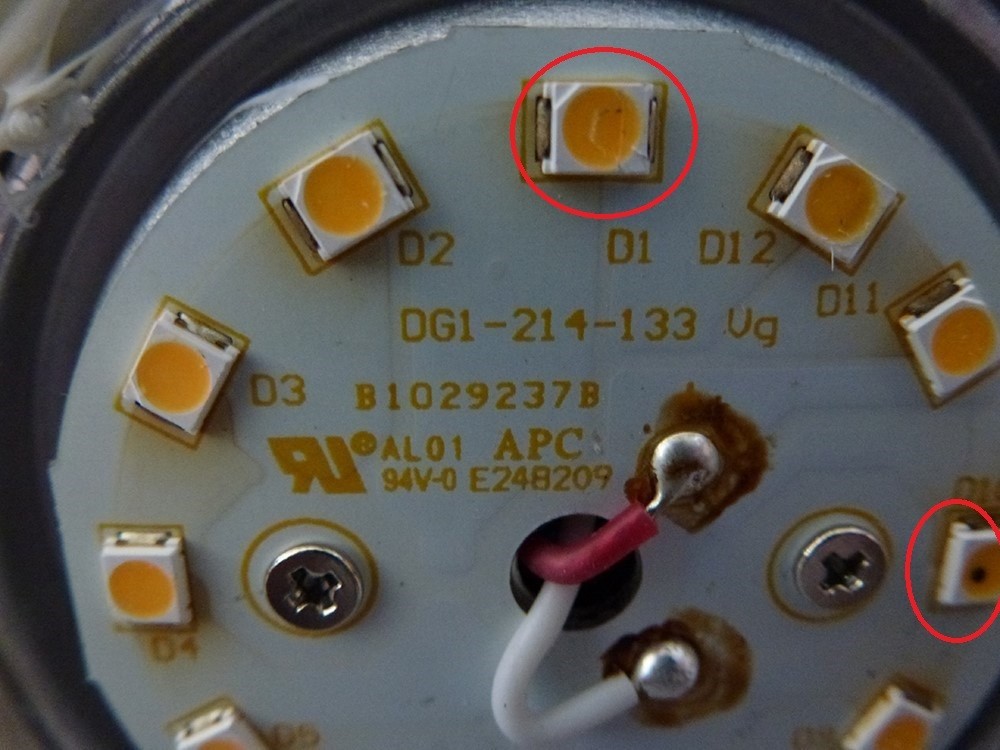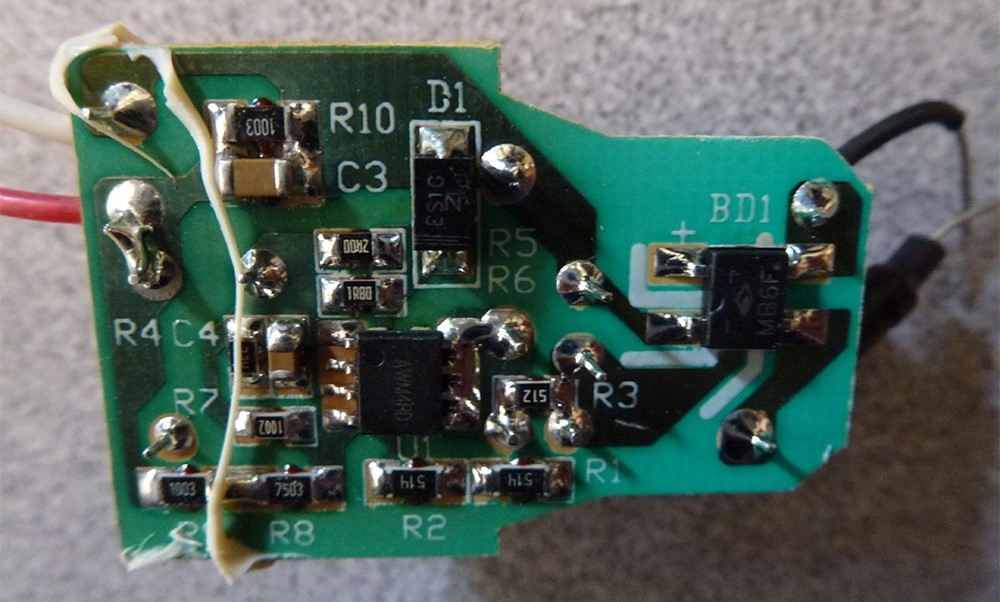Who killed this LED? American netizens said
LED semiconductor lighting Reuters recently, "American engineer dismantling Made in China LED light bulb," a text message a friend had said that the design be a conscience, which some have ah; or did not see it, in the end who killed the unruly LED ? Below the original English text, dozens of netizens commented on the root cause of the troubles in the lively. The following selection of some people's speeches translated into Chinese, I hope to gain something for everyone.
Not long ago, the EDN US version editor dismantled the broken LED lights at home and wrote a dismantling "Teardown: What killed this LED bulb?". After seeing this, I compiled and translated this article and published it in Chinese. On the version, after many readers saw it, the comment said that it still didn't see it. Who killed the LED?
Oh, yes, forgive me for click bait, and I will change the title slightly. "American engineers dismantled Chinese-made LED bulbs: Did you reduce the cost?" The result was a friend who said that he didn't see how to cut corners and friends. The message said that the design is a conscience, and there are some.
Below the original English text, dozens of netizens commented on the root cause of the troubles in the lively. In fact, it is not important to understand who killed this LED. Everyone spends so much time and patiently with a light bulb of a few dollars, which fully reflects the natural love of our electronics engineers for professionalism. It is this passion and commitment. It has promoted the rapid development of the global electronics industry.
The following selection of some people's speeches translated into Chinese, I hope to gain something for everyone.
Netizen slotef
D7 is gone, it would be a problem if all the beads are connected in series. But why are you missing? There seems to be a trace of heat on the board.
Perhaps the ceiling installation (LED down) is not ideal for LED bulbs (no heat dissipation), the heat generated during the work is baking the components, so the weakest one hangs and the whole light does not illuminate.
User RBENG
The board looks like a hand soldered, possibly with lead-free solder. Manual soldering is difficult to solder with inexpensive lead-free solder, and high-quality lead-free solder (my personal preference for silver-bearing KESTER) is expensive, as can be seen by the naked eye, very low manufacturers should be less likely to use . There should be cold solder joints on this board.
The heat dissipation is very poor. The LEDs will heat up during operation and may be hot enough to break the solder of an LED (these LEDs appear to be connected in series on the PCB).
I suspect that the life prediction for LEDs is based on a 25-degree working environment. According to the general rule of law, the life of an electronic component is reduced by half for every 10 degrees.
If the LED is operating at 100 degrees, the lifetime of 10,000 hours will drop dramatically to about 2,500 hours.
User KKing1
I agree with the "bad welding" speculation.
As someone said, C3 seems to have one end not welded.
I also suspect that there is no connection between R4 and R7.

User UweZi_
The assumption of Cylone0 is completely correct, and D10 is the cause of your failure. I've seen similar LED lamp failure modes, but those that use a capacitive dropper instead of a transformer circuit—a simple spike on the grid can cause a malfunction. Because all the LEDs are connected in series, one of the broken lights will be finished.
The number and size of LEDs impressed me a lot, and the manufacturer had to supply a serious excess of 800 lumens. 800 lumens of LEDs (11 beads) means 73 lumens per generation.
The heat sink compound between the PCB and the bottom looks a bit suspicious and sparse.
User MKHK LED
The use of multiple sockets to fully enclose the ceiling fixture is the cause of the failure and may be the cause of other LED or CFL failures. A large number of installations should use a dedicated fixture. The lamp itself is evidence of overheating.
The TIM (some grease) between the MCPCB and the tubing is dry. The drive device is faulty (the evidence is PCB color change and some components) which can cause the surge to burn out the bonding wires inside the D10 LED. Both LEDs and energy-saving lamps require free and upward convection. Think about the smoke in the chimney. The longer the duty cycle, the shorter the life. In a fully enclosed luminaire, the peak temperature is reached in 15-20 minutes.
User bostonengineer
You Brian (disassemble the original author), your article title is "Who killed this to make the light bulb", then you really should take a few minutes to do some basic troubleshooting. In fact, I was disappointed and found that your article found that only one LED bulb was removed.
You can put at least one voltmeter on the bad LED string to see if it has power, so that it is determined whether the LED is broken or the power supply is broken. If the LED is broken, you should see if it is mentioned by JamesJackon, then use an equivalent resistor to try to see if other strings will light up, then measure the voltage on the shunt resistor and check the voltage and current regulation.
User Petar2323
R10 and C3 are just filters, I think it can work without these two components. If the electrolyte is finished, the voltage will fluctuate, but it will still provide more "flash". I will check the LEDs as described by James Jackson. One of them is already broken.
Try disassembling the IKEA bulbs, which are some medium-priced bulbs, but I am very good at home.
User franck38
A D10 failure can be the root cause of the problem.
But what caused this failure is a question? It may be too high a temperature... As far as I know, electrolytic capacitors are sensitive to high temperatures.
Overvoltage on the primary side can cause a malfunction.
Verify the voltage on the secondary side and the LED controller, replacing the replacement D10.
Then I wish you good luck...
User Richard B.
Failure to solder to the base may be the root cause.

LED D10 has a black dot on the orange plate, but the orange plate on LED D1 looks like a crack. I have seen cracks/twisting on some over-driven LEDs.

I also noticed that at the bottom of the PCB, there is an unsmooth solder flow near the transformer pin R7, which may be a bad solder joint.
Then I noticed that there was a slight discoloration on the white solder film around some of the LEDs. It’s as if they are a bit hot. I don't see how the light bulb is mounted on the fan frame. It is very likely that the bulb is not sufficiently cooled and the D10 is faulty. The final answer.
User MeasurementBlues
I have a lot of LED BR30 (Feit Electric bought from Costco), which are hidden in several rooms. After about a year, one of them was lit for a few minutes after being turned on, and it was dark for a while. This happened about 10 minutes after the light was turned on.
I suspect it is a heat problem, so I removed the light bulb and installed it on the light stand. Sure enough, it is the problem of heat dissipation. I deleted the diffuser, and that's it.
User PatrickB488
I am curious to see that the molten wire is insulated in the final PCB view and there is a lack of current through the faulty LED. Without the graphical information, I can't judge whether there is a bypass function, so even if the cluster fails, there is another device that allows the "invasive" design to still work.

A bad bypass design may ruin any derating design for reliability with a small point of failure. I don't know if there are any problems with the use/installation, but if the insulation melt is not caused by your disassembly process, then it may be wise to choose a higher tem rating.
User JamesJackson
Everyone said very well, my comment is late.
I will add one, I suspect that one of the LEDs is faulty because they are all connected in series. This means that... for each LED 3.5 volts, this LED string requires a total of 38.5 volts.
If it were me, I would take my reliable digital voltmeter and turn it on to the "Diode Check" function to check each LED individually. They won't be too bright, but they will at least have a bit of light, otherwise they will be the culprit.
It's also possible that other components on other PCBs are broken, but starting with the LEDs, you can rule out their faults or make sure they are broken - because they are not lit.
User Edward.Keating
The close-up of the lid can be seen at 130 degrees and the ballast is used, so it may not be the culprit.
If I check the fuse first, then the LED chain, see if there are any bad ones on the line. It can be reassembled and a restrictor can be used if the fuse is broken. (When using line current, I like to use a 100 - 500 w incandescent bulb as a current limiter.)
Depending on your location and budget street Lighting Pole may include structures which are crafted from steel, aluminum, cement, wood or fiberglass.
street pole, street lighting pole
material: steel,Q235,SS400.
type:conical, octagonal, or polygonal ,mid-hinged ,taped and other shapes.
height:3-30m
Thickness:2-6mm
surface treatment: hot dip galvanization or hot dip galvanization and powder coated.
arm: single arm,double arms ,three arms or four arms.
Application: street ,road ,highway, park ,factory ,school and so on.
power souce: high pressure sodium light , metal halide light or flood light.or energy saving light.
Street Light Pole,Steel Lamp Pole,Street Pole,Street Lighting Pole
YIXING FUTAO METAL STRUCTURAL UNIT CO.,LTD( YIXING HONGSHENGYUAN ELECTRIC POWER FACILITIES CO.,LTD.) , https://www.chinasteelpole.com
